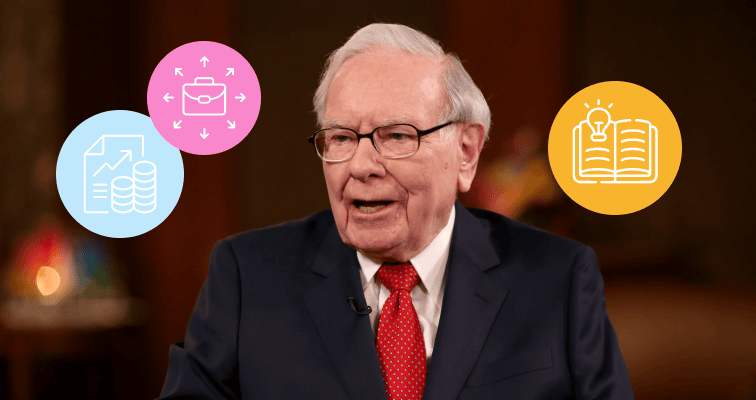The compounding effect is one of the secrets of successful
Achieving your investment aims is reliant on more than just picking the right investments; it depends on how you manage those positions while they remain in your portfolio. One such portfolio management tool is compounding and using it could revolutionise your approach.
What is Compounding?
Compounding is an investment technique that aims to generate a “snowballing” effect. It involves reinvesting any returns over the lifespan of a position so that income received from it is transformed into additional investment
Compounding involves a virtuous circle forming where your capital increases in size, which increases the income you receive, which increases the size of the capital amount, which once more increases the income, and so on.

How does Compounding work?
Compounding occurs when you earn interest on your original capital and also earn interest on any incremental income that you previously received and reinvested. The interest you earn on any reinvested income is the key element of the process.
The types of credits received, and which need to be reinvested, include stock dividends, bond coupons, and capital gains such as interest on cash balances.
Taking a cash savings account as an example, when interest paid is left in the account, it will be added to the overall total. The next time that interest is paid, it will be paid on that new total which is larger than the starting amount.
It is important to note that not all investment income is automatically reinvested. Enjoying the benefits of compounding might involve taking action to manually reinvest any income. For instance, certain stock dividends may (as a default) be paid out to investors in the form of cash, rather than reinvested into their holding. In this instance, an investor would need to contact their broker and opt to change the way that they receive dividends.
Tip: Dividend reinvestment plans (DRIPs) are schemes specifically set up to support investors looking to adopt a compounding approach.
Compound interest vs simple interest
The terms “simple interest” and “
An example of compound interest
Take a savings account holding £1,000. If the interest on the account is paid annually at a rate of 5%, after 12 months, £50 will be paid out to the account holder.
If the simple interest approach is adopted, the £50 isn’t reinvested and the account balance remains at £1,000, so an annual interest payment of £50 will be issued in all subsequent years.
After 5 years of following the simple interest approach, the net value of the portfolio will be £1,000 + £50 + £50 + £50 + £50 + £50 = £1,250.
However, if the compound interest approach is adopted:
The £50 received in the first year is reinvested, increasing the account balance to £1,050. The following year, the interest rate is applied to a larger capital amount meaning more annual interest is received, in this case £52.50 (£1,050 x 5%). If reinvested again, this additional £52.50 further boosts the account to £1,102.50, and in year three, the account benefits from even higher annual interest credit (£1,102.50 x 5% = £55.13).
After 5 years of applying a compounding strategy, the net value of the portfolio will be £1,000 + £50 + £52.50 + £55.13 + £57.88 + £60.78 = £1,276.28
This pattern continues for as long as the position is held. One important feature is that the marginal difference between the two approaches grows over time. This is when the exponential nature of compounded returns come into play and after 20 years, the two approaches in our example would be associated with net values of £2,050.00 and £2,653.30.
| Year | Principal Without Compounding | Annual Return (Withdrawn) | Principal With Compounding | Annual Return (Reinvested) |
|---|---|---|---|---|
| Year 1 | 1,000 | 50 | 1,000.00 | 50.00 |
| Year 2 | 1,000 | 50 | 1,050.00 | 52.50 |
| Year 3 | 1,000 | 50 | 1,102.50 | 55.13 |
| Year 4 | 1,000 | 50 | 1,157.63 | 57.88 |
| Year 5 | 1,000 | 50 | 1,215.51 | 60.78 |
| Total Return | 1,000 | 250 | 1,276.28 | 276.28 |
Tip: A compound interest calculator can help to visualise how an investment can compound exponentially over time.
The impact of compounding on investments
Reinvesting any investment income that you receive will increase in the size of the capital you have invested and your overall returns. As long as the positions you hold continue to benefit from further income payments such as dividends, the effect will continue to apply.
Compounding can be particularly beneficial for long-term investors. The way that returns ultimately begin to grow exponentially after a number of years is also the reason young investors are encouraged to start building a portfolio as soon as possible.
If you don’t have a lump sum to invest, that doesn’t mean you can’t benefit from the compounding effect. Investing smaller amounts on a regular basis and following the recurring investing approach will allow you to begin benefitting from the compounding effect.
Tip: The compounding effect can be particularly beneficial for those planning for retirement or adopting a FIRE investing approach.
Warren Buffett’s approach to compounding
Famed investor Warren Buffett is one of the greatest exponents of the benefits of compounding.
Our favourite holding period is forever.
Warren Buffett, Berkshire Hathaway Letters to Shareholders
While managing a diverse, but fairly standard, portfolio concentrated on household names and blue-chip stocks such as Coca-Cola and Bank of America, Buffett built his personal wealth to an estimated $132.8bn. Interestingly, 99% of Buffett’s total wealth was generated after he turned 50.
The secret to his strategy? His decision to adopt a compounding approach to the returns made in his earlier years.
The way that Buffett grew his personal wealth is an example of how exponential returns can result in life-changing gains for investors who take a long-term approach.

Factors that impact the effectiveness of compounding
Compounding is a long-term approach, so it is crucial to continually monitor how real-world events influence the ongoing performance of your portfolio. To maximise your compounding returns, it is important to consider the risk factors that might impact the effectiveness of your strategy.
| Factor | Impact |
|---|---|
| Market prices | Compounding relies on the value of the assets you hold going up in value. Nothing is ever guaranteed in the markets, but the long-term trend in stock markets has historically been favourable to the compounding approach. |
| Instruments | Not all financial instruments generate a regular income and those that do now might not do so in the future. Dividends, for example, are paid at the discretion of a company’s management team and adjust over time according to how the business performs. |
| Personal circumstances | A compounding strategy needs to be the best investment approach for your personal aims. If your priority is receiving a regular income stream, or liquidating assets to finance your lifestyle, then compounding may not be the optimal strategy for you. |
| Taxation | Another factor to consider is how taxation will impact your investments. Tax terms and conditions differ across different regions, so it is important to consider the relative tax rates on, for example, receiving dividends as cash or stock. You may also want to factor in capital gains tax (CGT). Reinvesting income rather than crystallising a capital gain now might be beneficial at some point in the future — for example, when you retire and expect to have a lower personal tax rate. |
| Costs | Holding positions at a broker will incur some costs. Time spent on ensuring that your preferred broker has competitive T&Cs can make a material difference to your long-term returns. You will also want to ensure that it offers markets in your target instruments and can be trusted. |
Tip: Most index performance statistics that detail long-term growth in stock market values assume that compounding applies to reinvested dividends.
Strategies to maximise compounding
To make the most of compounding, it is essential to take a long-term view and adopt a buy-and-hold approach. You could also consider recurring investing strategies which encourage investing consistently over time rather than waiting to build up a savings pot before entering the market.
Maintaining stability and consistency is key to compound investing. Keeping a cash buffer allows you to handle unexpected short-term demands on cash flow, without having to liquidate any investment positions.
Once you’ve established your strategy, choose assets that support a compounding approach. Popular options for compound investors include dividend stocks, bonds, money market funds and real estate investment trusts (REITS).
It is important to remember that the fundamental principles of investing still apply. Select assets that appreciate in value, and diversify across sectors, regions and asset types to manage risk and even out returns.
Tip: The Dividend Income Stocks Smart Portfolio is a fund style product designed to generate income which can be reinvested.

Final thoughts
While Albert Einstein is often credited with describing compounding as the eighth wonder of the world, the good news is that you don’t need to be a scientist to understand and incorporate the approach into a long-term investment strategy.
Investing with a degree of discipline and following simple and effective guidelines can help you to take advantage of the compounding effect on your way to achieving financial independence. The longer you hold your positions, the greater the potential for exponential growth and the potential for significant returns as the snowballing effect gains momentum.
Learn more about long-term investing by joining the eToro Academy.
Quiz
FAQs
- How does compounding contribute to investment growth?
-
Compounding results in your total exposure to investments being maximised. As short-term income is reinvested, the next time income such as dividends are paid, you’ll receive a larger payment than if you hadn’t reinvested. As compounding generates exponential returns, it can be particularly beneficial if your investments are held long term.
- What factors can affect the rate of compounding?
-
The formula used to explain compounding won’t change over time, but the size of the variables involved almost certainly will. The amounts of regular income paid by assets in your portfolio may change due to macroeconomic factors, the underlying price of the assets you hold will vary over time, and you may decide to withdraw income to meet short-term demands.
- How can investors maximise the benefits of compounding?
-
Compound investing relies on discipline and patience. It also requires your initial asset selection to be well thought out, and there is a need to monitor positions on an ongoing basis and, where necessary, rebalance your portfolio.
- How can you reconfigure your portfolio to take advantage of compounding?
-
Shifting the focus of your portfolio to focus on the compounding effect involves increasing the proportion of your portfolio which is made up of assets which generate income, and ensuring any payments you receive are reinvested. This involves rebalancing your portfolio by selling assets which don’t generate a return, and buying assets such as stocks which pay dividends and fixed income products which pay coupon interest. You will also need to check that your account is set up to reinvest any dividends or coupons and not paid to you in cash.
- What are scrip dividends?
-
Scrip dividends are payments made to shareholders in the form of more stock rather than cash. Receiving dividends in this form is ideal for investors following a compounding strategy.
This information is for educational purposes only and should not be taken as investment advice, personal recommendation, or an offer of, or solicitation to, buy or sell any financial instruments.
This material has been prepared without regard to any particular investment objectives or financial situation and has not been prepared in accordance with the legal and regulatory requirements to promote independent research. Not all of the financial instruments and services referred to are offered by eToro and any references to past performance of a financial instrument, index, or a packaged investment product are not, and should not be taken as, a reliable indicator of future results.
eToro makes no representation and assumes no liability as to the accuracy or completeness of the content of this guide. Make sure you understand the risks involved in trading before committing any capital. Never risk more than you are prepared to lose.


